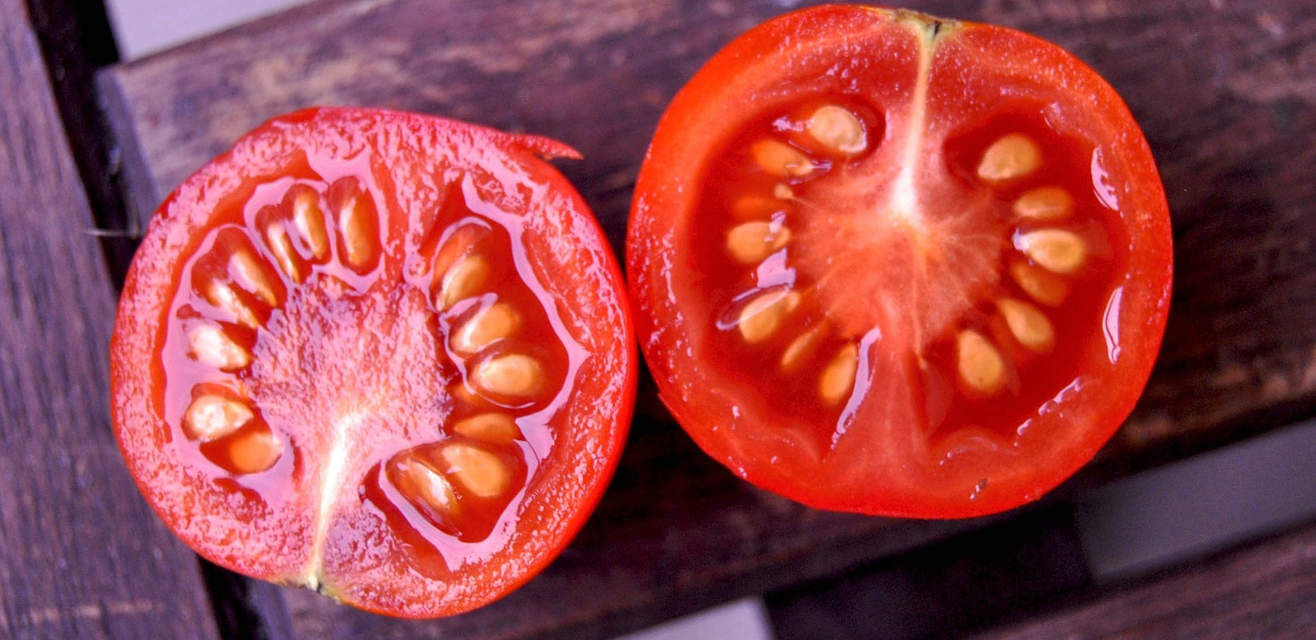Fermenting tomato seed to remove disease

The easy way to save tomato seed is to squeeze it onto paper towel and dry it. However any diseases – viruses and pathogens – will be retained in seed dried this way. At Sustainable Macleod, we share seed with the community and grow seedlings for the Macleod Organic Community Garden, so we have an ethical obligation to clean our seed of any disease. In future, we will need to only accept fermented seed, or seedlings grown from fermented seed so here’s how to do it.
Fermenting tomato seeds mimics nature. In nature, a tomato will fall to the ground, and ferment (rot), removing the sprout inhibitor that is the gel sac around each seed, and then germinate, resulting in new plants.
How to ferment tomato seed
It is easy to ferment seed. You will need a small, lidded jar for each variety. Label each jar before using. Choose only healthy, ripe tomatoes.
Cut the tomato in half and squeeze the pulp into a jar. Cover with 1 cm of water*, screw the lid on and place in a warm spot. An outside spot is good because the mix will become smelly though this is generally only apparent when the lid is removed. Technically speaking, you don’t need a lid but it does keep in the stench.
Inspect the jar each day. You are looking for a white mould to form on the surface. This will take 3 – 5 days. Once the mould has spread across the surface, inspect the jar again for viable seed. To do this, lift up the jar without tipping it and look at it from beneath. You will see the viable seed on the bottom. Seed that floats is not viable and should be gently tipped out, and then the sunken seed tipped into a strainer and rinsed. On the second day of mould forming, embark on this process. As you have removed the sprouting inhibitor, any longer will result in the seeds germinating in the jar and they will need to be thrown away.
To dry the seed, rinse it in a strainer under running water and then tip it onto baking paper or paper plate, and spread the seed out so it does not dry in clumps. Do not use a ceramic plate or paper towel. Water will pool on ceramic plates and the tiny hairs on the tomato seed will adhere to paper towel – neither of which we want. Any water on baking paper and paper plates will disappear quickly and both surfaces prevent damage to the minute hairs of the seeds. Place the seeds in a warm, airy place to dry. This will take about a week. Then store them in envelopes or jars in a cool, airy place out of direct sunlight.
This process can also be used to save cucumber seed.
*Some people do not add water to very juicy seed but I do because it is much easier to tip off any unviable seed. Adding water slows the process by about a day but that does not matter.
Written by Robin Gale-Baker
